ALDHbr Assay Kit
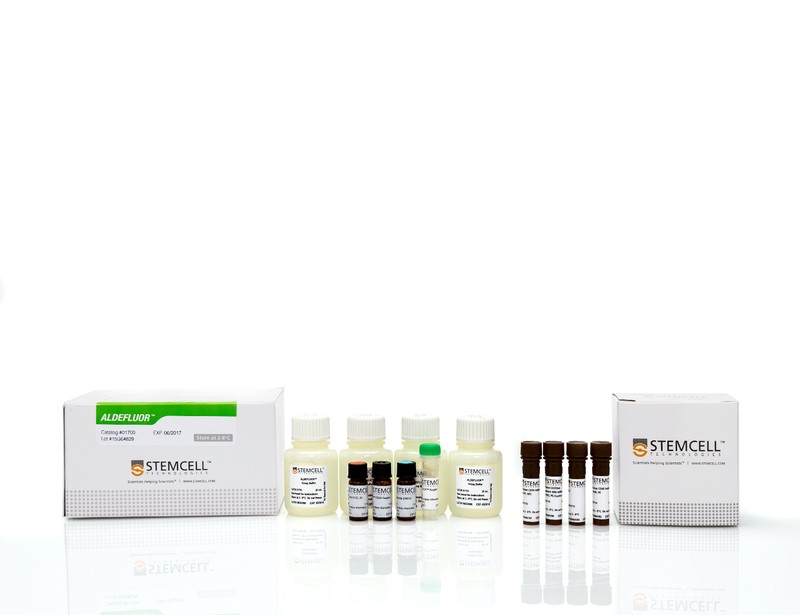
For the detection of CD34+ and ALDHbr cells in human cord blood
The ALDHbr Assay Kit is optimized for the identification and quantitation of CD34+ cells that express high levels of the enzyme aldehyde dehydrogenase (ALDH) in human cord blood samples. This kit contains both the CD34+ Cell Detection Kit and the ALDEFLUOR™ Kit. The CD34+ Cell Detection Kit contains pre-selected fluorochrome-conjugated monoclonal antibodies that have been optimized for use with the ALDEFLUOR™ Kit to detect cells that express CD34 and have high ALDH activity by flow cytometry. The CD34+ Cell Detection Kit contains anti-human antibodies APC CD34, PE CD45, and PE-Cyanine5 Glycophorin A/B, and 7-AAD viability dye.
A flow cytometer equipped with a 488 nm laser and a 635 nm laser for excitation and appropriate filters for detecting APC, PE, PE-Cyanine5 and 7-AAD fluorescence is required for use.
ALDEFLUOR™ Kit
For the identification, evaluation and isolation of stem and progenitor cells expressing high levels of ALDH
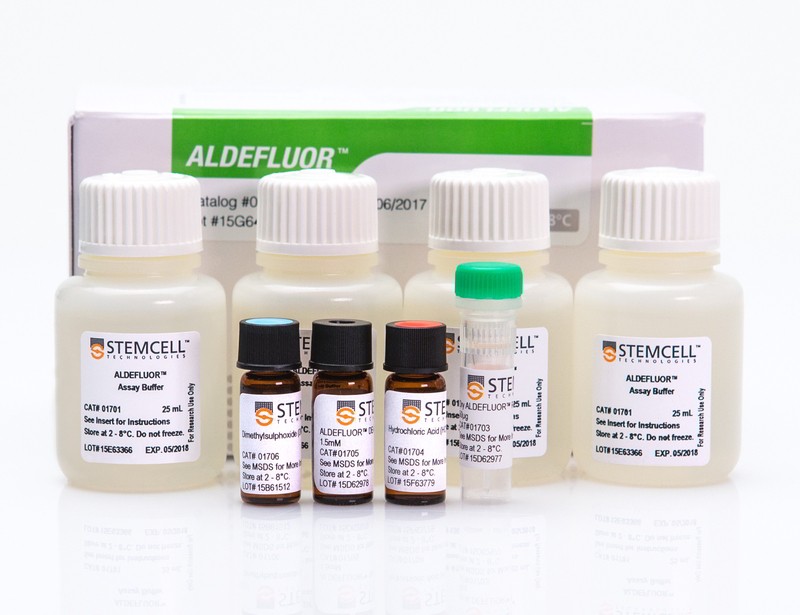 The ALDEFLUOR™ reagent system is a non-immunological method to identify stem/progenitor cells on the basis of their aldehyde dehydrogenase (ALDH) activity. High ALDH expression has been reported for normal and cancer precursor cells of various lineages, including hematopoietic, mammary, endothelial, mesenchymal, and neural. Cells expressing high levels of ALDH become brightly fluorescent (ALDHbr) and can be identified and enumerated using a standard flow cytometer or isolated by cell sorting for further purification and characterization.
The ALDEFLUOR™ reagent system is a non-immunological method to identify stem/progenitor cells on the basis of their aldehyde dehydrogenase (ALDH) activity. High ALDH expression has been reported for normal and cancer precursor cells of various lineages, including hematopoietic, mammary, endothelial, mesenchymal, and neural. Cells expressing high levels of ALDH become brightly fluorescent (ALDHbr) and can be identified and enumerated using a standard flow cytometer or isolated by cell sorting for further purification and characterization.
The use of an internal cellular enzyme for identifying and isolating stem and progenitor cells provides an alternative to the more traditional method of staining with antibodies against cell surface antigens.
7-AAD (7-Aminoactinomycin D)
Cell viability dye (DNA-labeling dye)
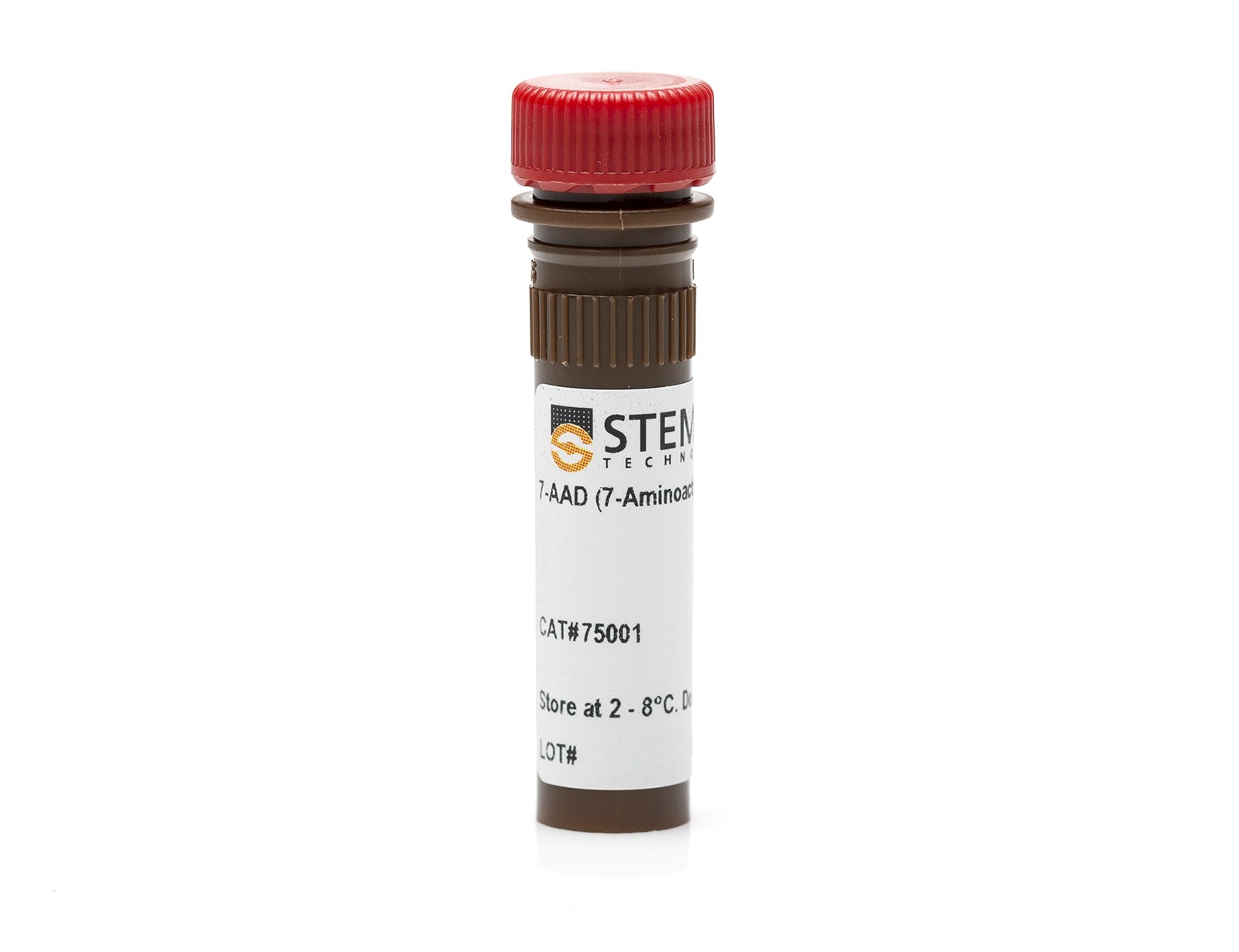 7‐AAD (7‐Aminoactinomycin D) is a fluorescent cell viability dye which is excluded from live cells with intact membranes but penetrates dead or damaged cells to bind to double‐stranded DNA with high affinity by intercalating between GC base pairs. It is often used as an alternative to propidium iodide (PI) to differentiate and exclude non-viable cells in flow cytometric analyses, and can be excited using 488 nm (blue), 532 nm (green), and 561 nm (yellow-green) laser lines. Compared to PI, 7-AAD offers the advantage of having minimal overlap in its emission spectra with mostly blue and green, and many red fluorophores, including the commonly used phycoerythrin (PE) and fluorescein isothiocyanate (FITC). 7‐AAD is also used in DNA fluorescence imaging applications to discriminate early and late stages of apoptosis, to study cell‐mediated cytotoxicity, and for chromosome banding analysis. 7‐AAD has been found to exhibit antibacterial properties and exhibits growth‐inhibitory activity against certain types of leukemia and sarcoma.
7‐AAD (7‐Aminoactinomycin D) is a fluorescent cell viability dye which is excluded from live cells with intact membranes but penetrates dead or damaged cells to bind to double‐stranded DNA with high affinity by intercalating between GC base pairs. It is often used as an alternative to propidium iodide (PI) to differentiate and exclude non-viable cells in flow cytometric analyses, and can be excited using 488 nm (blue), 532 nm (green), and 561 nm (yellow-green) laser lines. Compared to PI, 7-AAD offers the advantage of having minimal overlap in its emission spectra with mostly blue and green, and many red fluorophores, including the commonly used phycoerythrin (PE) and fluorescein isothiocyanate (FITC). 7‐AAD is also used in DNA fluorescence imaging applications to discriminate early and late stages of apoptosis, to study cell‐mediated cytotoxicity, and for chromosome banding analysis. 7‐AAD has been found to exhibit antibacterial properties and exhibits growth‐inhibitory activity against certain types of leukemia and sarcoma.
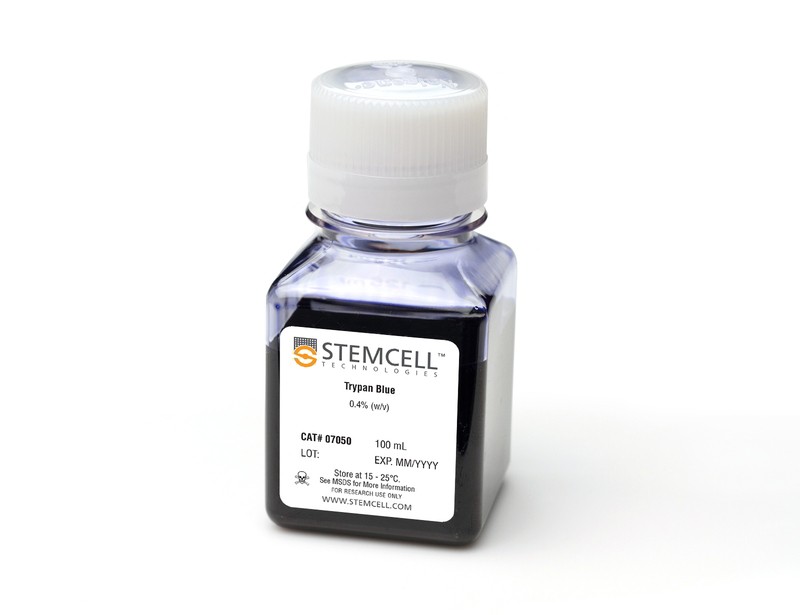
Trypan Blue
Reagent for counting viable mammalian cells
Trypan Blue is recommended for counting viable mammalian cells. Viable cell counts should be performed where a decrease in cell viability may be expected, for example, when working with cryopreserved cells or cells manipulated ex vivo.
3% Acetic Acid with Methylene Blue
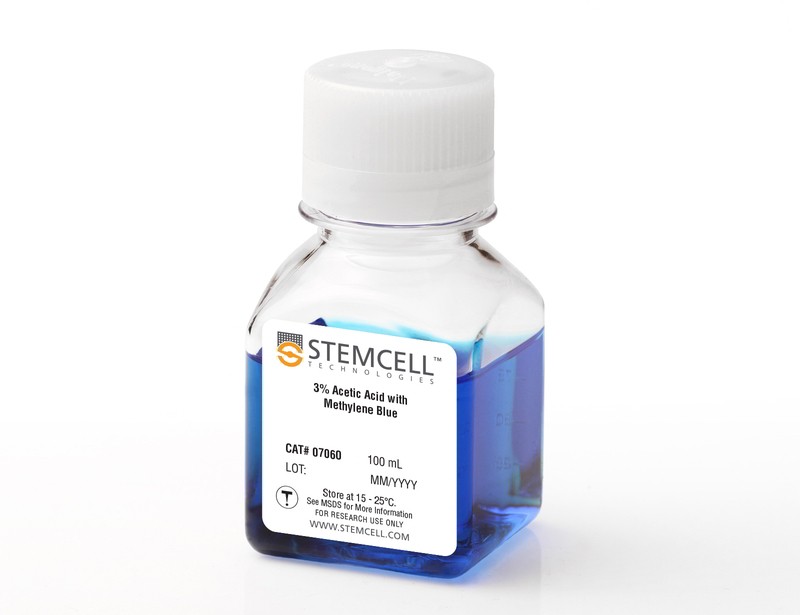 Reagent for manual counting of nucleated mammalian cells
Reagent for manual counting of nucleated mammalian cells
3% Acetic Acid with Methylene Blue is recommended for manual counting of nucleated mammalian cells. It will lyse red blood cell and white blood cell membranes. The remaining white blood cell nuclei will stain lightly with methylene blue.

